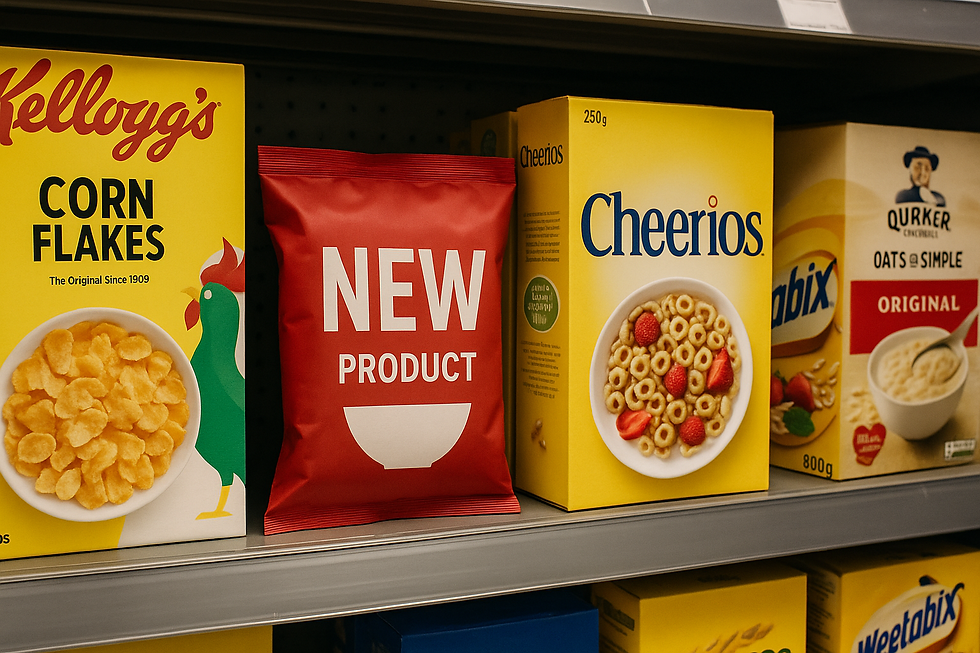The Polarisation of Nordic Grocery Shopping
- Adrian Sanger

- Apr 23
- 3 min read
Updated: Oct 1

An Ever-Changing Way to Shop
Nordic grocery shopping used to be predictable. Not anymore
One minute customers are filling their baskets with cut-price canned goods at REMA 1000. The next they are splurging on organic, hand-churned butter at Meny. Nordic grocery shoppers are switching between budget and premium. Sometimes on the same trip. It is a trend retailers cannot ignore.
For years, the Nordic grocery market followed predictable patterns. Loyalty to national chains. A focus on sustainability. A preference for quality over price. But shopper data now tells a different story. Discount retailers like Lidl, REMA 1000 and Willys are growing, driven by inflation and cost conscious habits. Meanwhile, high end grocers like Meny, ICA Kvantum and Hemköp hold firm, catering to those still willing to pay for quality. This is not just a response to rising costs. It is a shift in how people shop. They are not loyal to price or premium. They are loyal to both. Basics? Discount. Treats and fresh produce? Premium. The middle ground is eroding. Retailers in that space need to move fast.
Shopper insight shows basket composition is more varied than ever. This makes category level insight more important than topline market share. The question for retailers is not just who is winning. It is where they are winning and why.
Recent data from The Wise Marketer highlights this shift. More shoppers are diversifying purchases across different retailers. They compare prices, shop around, and balance savings with quality.
DVJ data suggests this is not a short term reaction but part of a more sophisticated set of saving strategies across the region. A study across Denmark, Norway and Sweden in 2024 revealed Danish shoppers are heading to discounters, switching to cheaper options, comparing prices, and cutting back on purchases. In comparison, Swedes favour discounters too but lean more towards private labels and lower-cost alternatives. Norwegians focus on comparing offers, buying less, and cooking more at home.
Across all three markets, the move towards discounters and private labels marks a clear shift. Price sensitivity is reshaping where people shop and what they buy.
Why is this?
Chasing the deal
Economic pressures, particularly rising inflation, have prompted many Nordic consumers to seek more cost-effective shopping alternatives. A consumer sentiment report by Boston Consulting Group revealed that 35% of respondents plan to trade down in groceries, while 39% are already shopping at low-cost grocery brands. An additional 40% indicated they are likely to increase their share of grocery shopping at these low-cost brands, highlighting a clear trend towards discount retailers.
The Shopper Who Buys Cloudberries in a Cost-of-Living Crisis
While half the market hunts for bargains, the other half is still picking up organic wine and hand-stretched sourdough. Premium is holding its ground. In some categories, it’s even growing.
These shoppers aren’t just filling a basket, they’re making a point. They’ll drive across town for a better cut of salmon or pay extra for eco-packaged oat milk. And they’re keeping the likes of Meny, ICA Kvantum and Hemköp in good health.
If you’re not cheaper or better, you’re invisible.
Impact on Mid-Market Retailers
The simultaneous rise of discount and premium retailers has placed significant pressure on mid-market grocery stores. These retailers, traditionally catering to a broad audience with moderate pricing and standard quality, now face challenges in retaining their customer base. As consumers increasingly polarise towards the extremes of the market spectrum, Mid-tier retailers need to rethink their value proposition or risk being squeezed out.
It’s all in the data
Market basket analysis has become a valuable tool for retailers to understand these evolving shopping behaviours. By examining transactional data, businesses can identify patterns and associations between products frequently purchased together, enabling them to tailor promotions and optimise product placements to better meet consumer needs.
This shift is not just anecdotal. With digital receipt tracking covering all major grocers, we see a clear pattern—shoppers are increasingly mixing discount staples with high-end treats.
Traditional panels fail to capture this, relying too much on stock-up missions. But Spenderlog’s AI-driven, real-time insights show that category-level choices are driving this divide. Discount retailers are winning in essentials. Premium grocers are holding ground in fresh and indulgence categories.
Get In Touch
If you’d like to learn more about this topic, or if you have any other questions, feel free to reach out to us at info@dvj-insights.com



